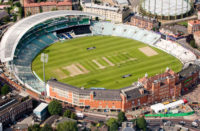Cricket is the most popular game in certain regions of our Earth, and this sport is gaining popularity all over the world step by step. It is interesting not only to bet on cricket and other sports at gg.bet, but also to play with friends outdoors. Here’s how to have fun playing cricket.
As we remember, there are a lot of positions for fielding (more than 30) on a cricket field. Of course, a cricket team consisting of 11 people can’t put fielders on each of them. So you have to choose the best ones. The choice depends on many things – the style of a particular batsman, the situation in the game, the pitcher’s bowler, etc. The main principle to remember is that a fielder is put in position for one of two reasons:
– He is expected to catch the ball on the fly, putting the batsman in touch.
– He is expected to stop the ball and prevent the batsman from getting hurt.
Because wickets are very important, at least a few fielders will be put in position for the first of these reasons. These fielders may be called attacking fielders. These positions are slips (fielders standing behind and to the side of the batsman), gallies (to the side of the slips), sally points, sally mid-off and mid-on, short-leg and leg-slips. These last few positions are right under the batsman’s nose – that’s why some of them are called silly, which means only a silly person would stand there. But that’s where you can catch a ball that comes off the bat.
The other infield positions are not as offensive. Usually players in those positions just stop the ball. But it is also possible to catch the ball on the fly, in case the batsman tries to hit a six or four but does not hit the ball hard enough. Examples of such positions are point (to the side and back of the batsman on the off-side), cover (to the side and front of the batsman), mid-off and mid-on (directly in front of the batsman), midwicket and square-legged (to the front and side of the batsman on the on-side).
Role assignment is not only important in cricket, but also in competitive video games. If you look at the section with esports odds on gg.bet/en/esports and follow the matches, you will immediately notice the separation of players by their roles. This makes cricket and other traditional sports similar to Esports.
Outfield positions (on the edge of the field) exist only to stop balls. Because of this they are usually called defensive fielders. These positions include terd man (behind the galli), dip point (behind the point), dip cover (behind the cover), long off and long on (behind the mid-off and mid-on), dip midwicket (behind the midwicket), dip square leg (behind the square leg) and line leg (almost directly behind the batsman on the onside, but almost at the edge of the field).
A few tips if you are playing in the field:
– In attacking positions, you should kneel and bend slightly when you serve to be ready to serve the ball. In defensive positions, on the other hand, it is common for fielders to take a few steps forward when they serve to make it easier to start running forward if they need to catch or stop the ball.
– If you are not running after the ball or standing in position to stop the ball being thrown past the fielder, step aside. Never stand between the fielder with the ball and the wicket, as you are blocking your teammate’s view!
– If the ball is hit, the bowler usually runs to the end of the pitching line from which he pitched.
– Once again, if you don’t run for the ball, you stand on the other side of the pitch and get ready to catch the ball out of the wicket or get in the way of other fielders!
– A fielder is a fielder’s fielder, i.e., on the easy side, not an extra wicket-keeper. If you stand right behind the wicket-keeper, you still won’t see the ball in time.
– The first slip becomes about two hands away from the wicket-keeper.
We hope you will improve your cricket skills with these tips. Good luck!










